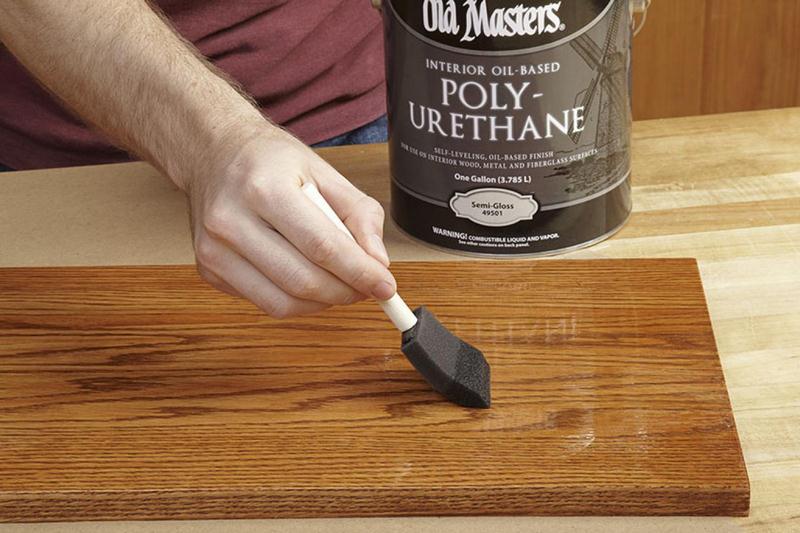Sand new raw wood prior to using polyurethane to create uniform porosity and to remove blemishes, glue marks, and pencil marks left by the carpenter.
Sand the wood in the direction of the wood grain, if you sand across the grain you will create scratch marks. Use 220 grit sandpaper for pre-urethane sanding. You can also use any best belt sander for this job. Belt sanders can save both time and energy.
A light sanding will do except on the end grain, which will require a more thorough sanding. Sanding creates a more uniform finish because it evens out the porosity of the wood.

You don’t have to stain before you use polyurethane. If you want a natural wood finish, you can skip the stain. If you do stain, you don’t want to sand after the stain application, before the first coat of polyurethane.
Sanding after staining will remove the stain in areas creating an un-uniform finish. Don’t sand after you apply wood stain.
Polyurethane requires sanding between coats for two reasons. First, it will smooth out any roughness and debris that may have gotten into the finish.
Second, polyurethane doesn’t have real good intercoat adhesion. You must sand between coats for good intercoat adhesion.
Read Also:
There is always a risk of sanding through the thin first coat of polyurethane, and the stain under it on the first coat, particularly on corners and edges.
Be very careful on the first coat, use light pressure, and don’t rub through the finish. As you build up the finish with more coats, you won’t need to worry as much as you will with the first coat.
Use 220 grit (as a rule) for sanding between coats. It is best to sand in the direction of the wood grain, but once you get some finish built-up on the wood, you can sand in a circular pattern.
Once you get three or four coats on, you can do a final sanding starting with 220 grit paper, then progress on to 320, then 400 grit for final sanding.
You should vacuum the sanding dust off after each sanding, and follow that with a microfiber tack rag.
After your final sanding, apply your final finish coat. You can apply it and leave it (if you have a good dust-free environment) this will leave you with the best sheen, or you may need to do a final buff out with very fine sandpaper 400 grit, then buff out with a rag, this will leave you with a very smooth “hand rubbed satin” finish.